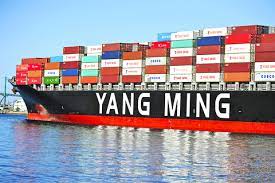
Yang Ming has sub-let one of the quintet of 12,690 teu vessels it took on a 10-year charter in 2020-21 to rival ocean carrier Maersk.
According to broker reports, Maersk will take charge of the Costamare-owned vessel in Q1 or Q2 next year for 12 months, at a daily rate of $57,000.
The fixture is the latest example of activity in the sub-let charter market for this size of vessel, in strong demand for the more buoyant north-south container trades.
Indeed, despite the oversupply of newbuild vessels in the ultra-large sizes, Alphaliner reports a “persistent shortage” of large ships, between 7,500 teu and 13,000 teu, “forcing charterers to pay healthy monies to secure the tonnage they need”.
The consultant said the Yang Ming ship was “a good size” for north-south trades, “where Maersk might be seeking to upgrade capacities”, adding: “Not all trades are hit by low rates and insufficient volumes.”
It explained: “While the east-west corridor is suffering a glut of tonnage, some north-south routes are doing better, especially West Africa and South America and India.”
It follows that carriers with less exposure to the under-pressure east-west tradelanes will enjoy a better return on their investment, while in contrast, the persistent sub-economic freight rates on some of these routes will severely damage the bottom lines of carriers heavily reliant on those trades for revenue.
Meanwhile, on containership charter market desks, brokers report a spike in enquiries following the Chinese Golden Week holiday.
“The number of fixtures being reported, as well as several pending negotiations, are pointing towards increased activity,” said London-based shipbroker Braemar.
Nevertheless, the majority of charterers in the market will not entertain longer-term fixtures, with most deals being done for a maximum hire of six months, including options.
And in a word of caution, Braemar said the current short fixtures meant vessels would “soon be open again, with operators expecting to renegotiate”.
Although daily hire rates in the larger sectors are holding up well, in the smaller sizes rates are weakening. In particular, Alphaliner reported that open tonnage was building up in the 2,000 to 2,699 teu sizes, noting that 10 further such ships would be looking for fresh charters by the end of November.
“Most of this tonnage is/will be open in Asia, while two vessels will be seeking new employment in the Atlantic,” it said.
In the smallest, sub-1,000 teu, sizes the consultant reported the looming prospect of “substantial overcapacity”, with, according to its data, some 21 ships becoming open early next month.
As earnings decline to just above operating costs even when these ships are employed, and with tougher environmental regulations around the corner, containership owners could decide soon that the time is right to retire their elderly tonnage – which will kickstart the hitherto lacklustre demolition sector.















